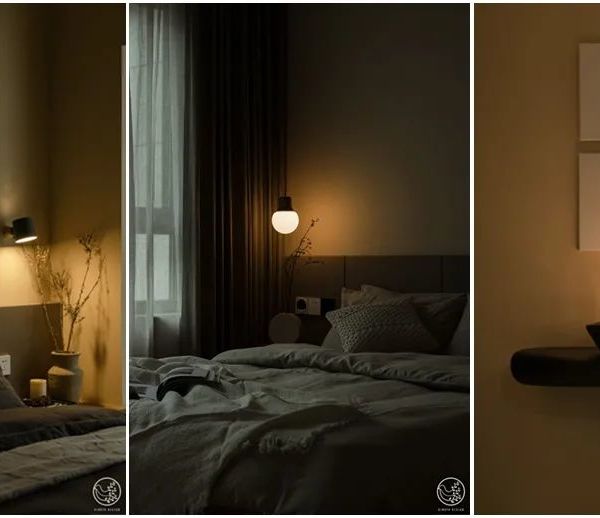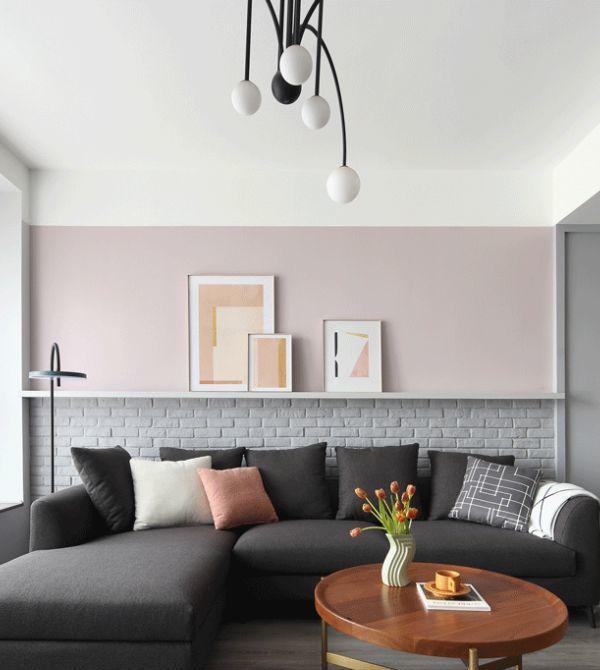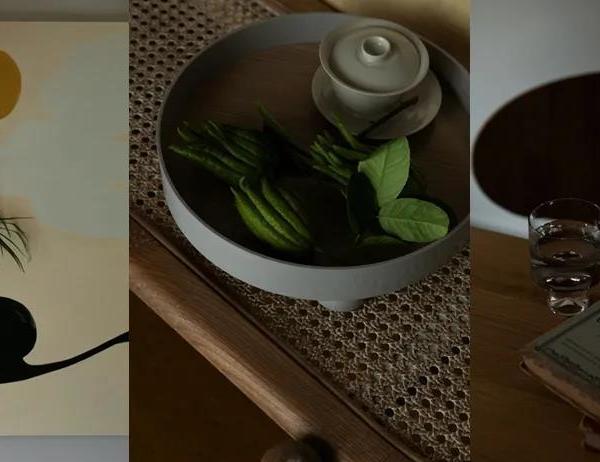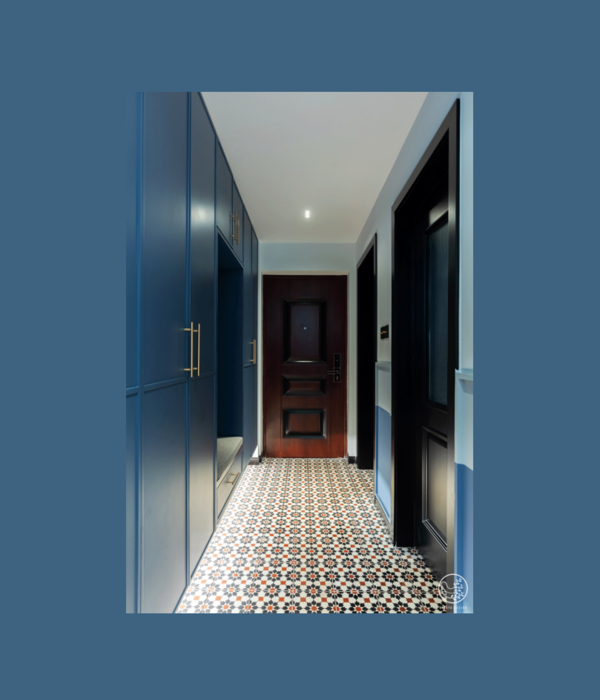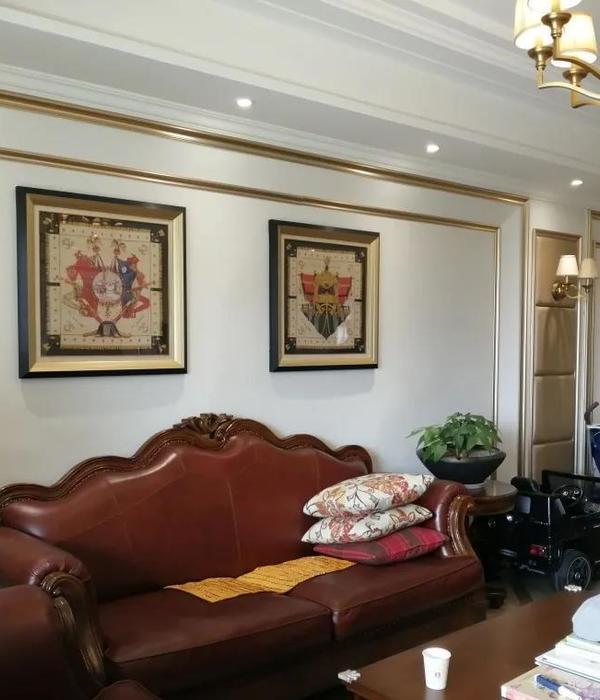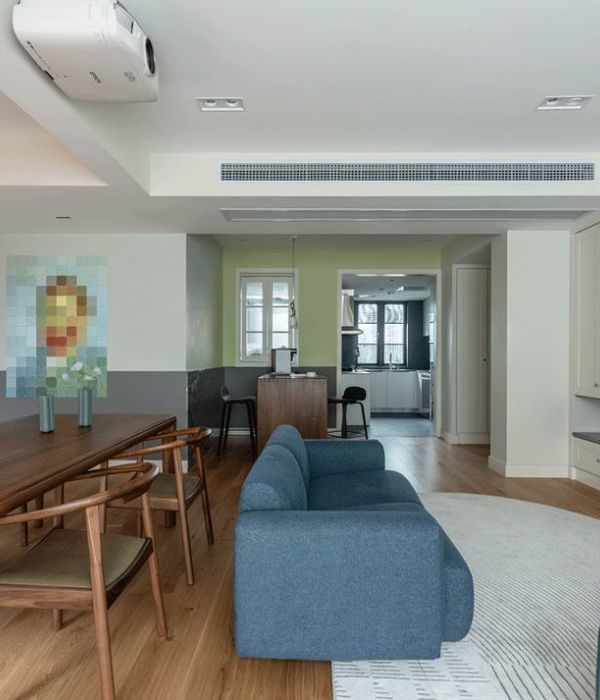© Fernando Gomulya
c.Fernando Gomulya
架构师提供的文本描述。这座房子位于巴厘岛塔巴南的凯拉廷。主人给它起名叫卡萨布兰卡。该地点距巴厘岛恩古拉伊国际机场仅半小时车程。新的住宅需要根据场地进行调整,有向河流倾斜的等高线,还有靠近河流的现有爪哇人住宅。
Text description provided by the architects. This house is located in Kelating, Tabanan, Bali. The owner named it Casablancka. This location is only one half hours from The Ngurah Rai International Airport Bali. The new residence need to be adjusted according to the site, with slooping contour to the river and also there is existing Javanese house located close to the river. © Fernando Gomulya c.Fernando Gomulya
总体规划战略
Master Plan Strategy
主要策略是应用巴厘岛建筑的概念-- 三方分区通过发展 Tri Mandala 概念来描述三个领域的空间概念,从 Nsta Mandala-外部和下世俗-- 神圣领域、Madya Mandala-中间领域-- 到 Utama Mandala-内部和高级最重要的神圣领域-- 的空间概念。中间的地方是阿卡萨或空间或禅宗区。就像法国的一场比赛一样,它可以作为一个玩 Pétanque 的地方。这个空间成为居住在这里的人们的通讯设备。它也代表了两种不同的客户文化,在西方和东方之间,在法国和印度尼西亚之间。
The main strategy is to apply the concept of The Balinese Architecture The tripartite divisions of zoning by developing the concept of Tri Mandala is spatial concept describing three parts of realms, from Nista Mandala - the outer and lower mundane less-sacred realm, Madya Mandala - the intermediate middle realm, to Utama Mandala - the inner and higher most important sacred realm. where on the center side is akasa or empty space or zen area. It can be used as a place to play Pétanque just like a game in France. This space becomes a communication device for the people who stay in this residence. It also represent the two different culture of the client, between west and east, between France and Indonesia.
© Fernando Gomulya
c.Fernando Gomulya
巴厘岛的桑加曼达拉概念由几个单独的展馆组成,它的位置总是被设定为美德和蔑视的等级,也是空间划分和分区的规则。Sanga Mandala 是关于方向的空间概念,根据八个主要方向和中心 (天顶) 将一个区域划分为九个部分。
The Balinese concept of Sanga Mandala consists of several separate pavilions and its placement is always set to the hierarchy of virtues and contempt also the rules of space division and zoning. The Sanga Mandala is the spatial concept concerning with directions that divide an area into nine parts according to eight main cardinal directions and central (zenith).
Ground Floor Plan
First Floor Plan
一层平面图
它的质量构成模式也依赖于 Swastika 模式作为巴厘岛模式所采用的模式。巴厘岛传统民居一般分为九种组成,也由几个独立的亭子组成。这座住宅就是用现代设计来诠释这一概念的。
The pattern of its mass composition also rely on Swastika pattern as the pattern adopted by the Balinese pattern. In Balinese traditional house normaly divided into nine compotition and also consists of several separate pavilion. This residence is the interpretation of this concept with the modern design.
© Fernando Gomulya
c.Fernando Gomulya
建筑理念
Building Concept
建筑的概念是对传统巴厘岛建筑命名为塔林的改造。塔宁是一种临时的竹子结构,通常是由巴厘岛社区为婚礼、火葬等特殊激情而制作的。在这一概念中,最重要的是楼层、墙壁和屋顶结构之间的分离。它们是独立站立的。但它与卡萨布兰卡住宅有着特殊的关系。
对于您的问题,我理解您想要了解关于建筑概念的更多信息。如果您有关于建筑的其他问题,欢迎随时向我提问。
The concept of the building is the transformation of traditional Balinese buildings named Taring. Taring is temporary structure made of bamboo usually made by the Balinese community for special ocassion such as wedding, cremation, and etc. The important thing at the Taring concept is that the seperation between floors, walls, and roof structures. Which stand independently. But it has a special relationship, which is to be implemented in Casablancka residence.
Axonometric
对热带的解释。
热带是地球表面在赤道南北各二十三度半间之地,即位于南北回归线之间的地球表面地带。因温度最高,故称为「热带」。
Interpretation of Tropicality.
在这个项目中,我们试图让人们接近自然。墙尽可能简单,取决于它的需要。墙由当地可用的砖砌而成,并平行排列成锯齿状,并将混凝土放在里面。这将减少巴厘岛的炎热天气,但同时也带来了自然的色调,砖橙色的内部色调。由于建筑物是在热带天堂,所以所有要建的建筑都尽可能开放,所以所有的空间实际上都是由浮地限定的,所以自然风可以自由进入。
In this project we attempted to bring people close to the nature. Wall made as simple as possible depend on it needs. The wall made of locally available bricks, and to be arranged zig zag parallelly and put the concrete inside. It will reduce the hot weather in Bali but at the same time bring the interior into natural color tone, brick orange colour. Since the building is in tropical paradise all the building mass to be built as open as possible so all the space isactually only defined by the floating floor, so the natural wind can be enter freely.
© Fernando Gomulya
c.Fernando Gomulya
竹结构作为一种柱结构和屋面支撑结构独立存在,它将允许自然光从砖墙上方的玻璃进入建筑物。
The Bamboo Structure stand independently as a structure of column and as roof supporting structure, it will allow for natural light into the building from the glass above the brick walls. © Fernando Gomulya c.Fernando Gomulya
地板饰面由两种类型组成。一种是当地人手工制作的灰色水泥颜色。第二个是用爪哇手工制作的彩色水泥,它曾经是三十年代殖民地建筑的一部分,主要是荷兰建筑。
The floor finishes consist of two type. One is handmade grey cement color by local people. And the second one is colorful cement handmade in Java which use to be part of colonials buildings in thirties, mostly for the Dutch building. © Fernando Gomulya c.Fernando Gomulya
墙是一种表述,也是对内外边界的重新定义,它包括砖墙和透明玻璃墙。它是把当代社会与自然联系起来。
The wall is a statement and also redefinition of the border between inside and outside, it contains of wall made of bricks and wall made of transparent glass. It is to connect the contemporary society with the nature.
Section AAAA节
屋顶是用扁平的竹子做的,建筑的山形是把光线带入每个不同的房间。它代表了人与天的关系。
The roof made of flattened bamboo, the mountain shape of the building is to bring the light into the each different room. It represents the relationship between the people and the sky. © Fernando Gomulya c.Fernando Gomulya
用混凝土和钢制成的结构柱,将现代材料作为东西方传统竹材与其他工业材料的结合。
The structure columns made of concrete and steel to bring the modern material as a combination between East and West between traditional bamboo and other industrial material.
Section BB Detail
BB 节细节
内部概念
Interior Concept
室内概念是东西方对话的一种转变,大多数家具使用的是 40 年代初荷兰占领印尼时期的回收材料和现代诠释,采用的是蓝色和白色的软色调。还使用了爪哇的旧木制家具。
The Interior Concept is the transformation of a dialogue between East and West, most of the furniture use the recycled material of early 40’s during the occupation of the Dutch period in Indonesia with the modern interpretation, by using soft color of blue and white fabric. and also use old wooden furniture from Java. © Fernando Gomulya c.Fernando Gomulya
Architects Budi Pradono Architects
Location Tabanan Regency, Indonesia
Category Houses
Lead Architect Budi Pradono
Assistant Architects Arief Mubaraq, Hendrawan Setyanegara, Eka Feri Rudianto, Anggita yudisty Zurman Nasution
Area 573.42 m2Project Year 2016
Photographs Fernando Gomulya
{{item.text_origin}}




